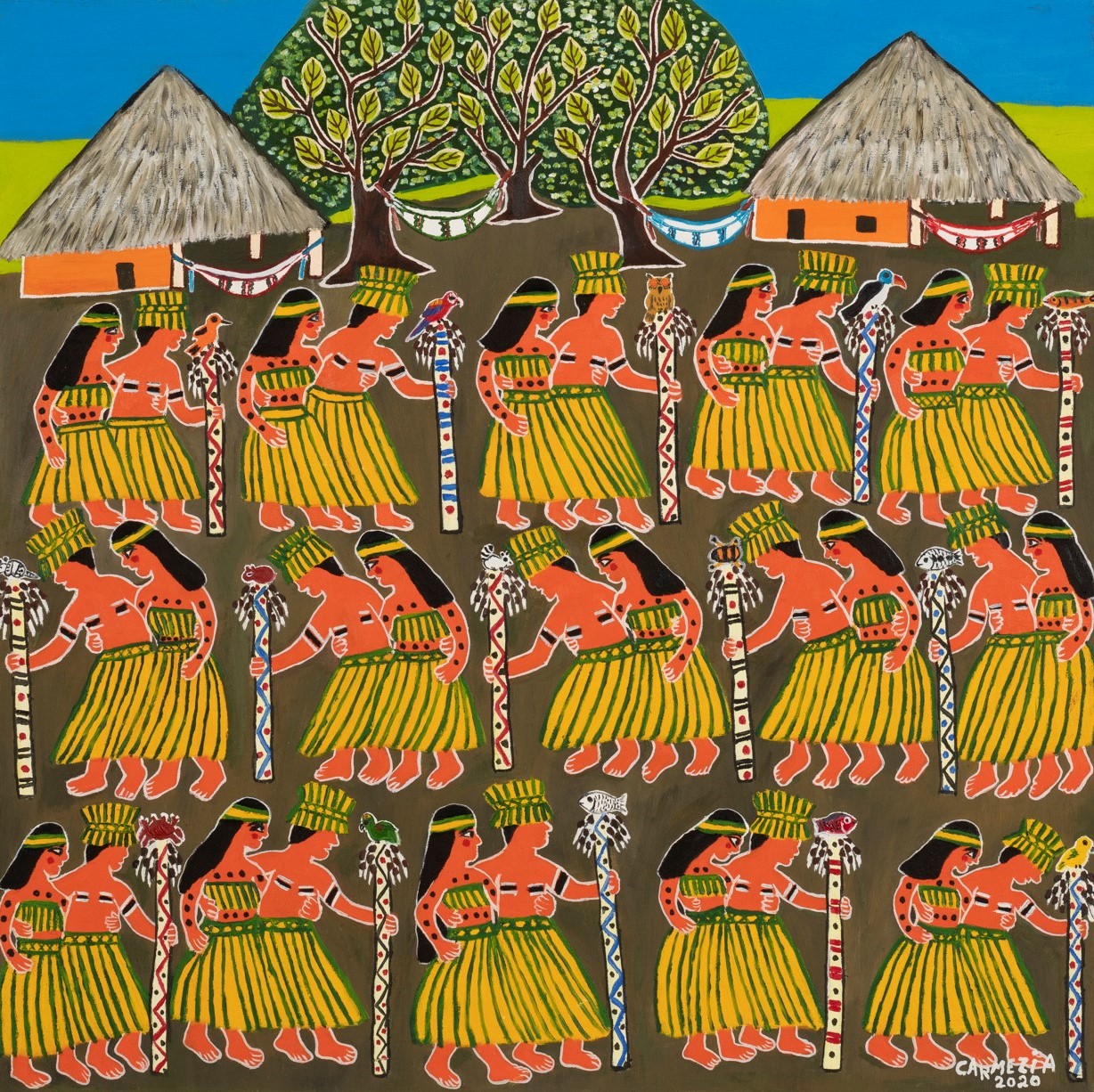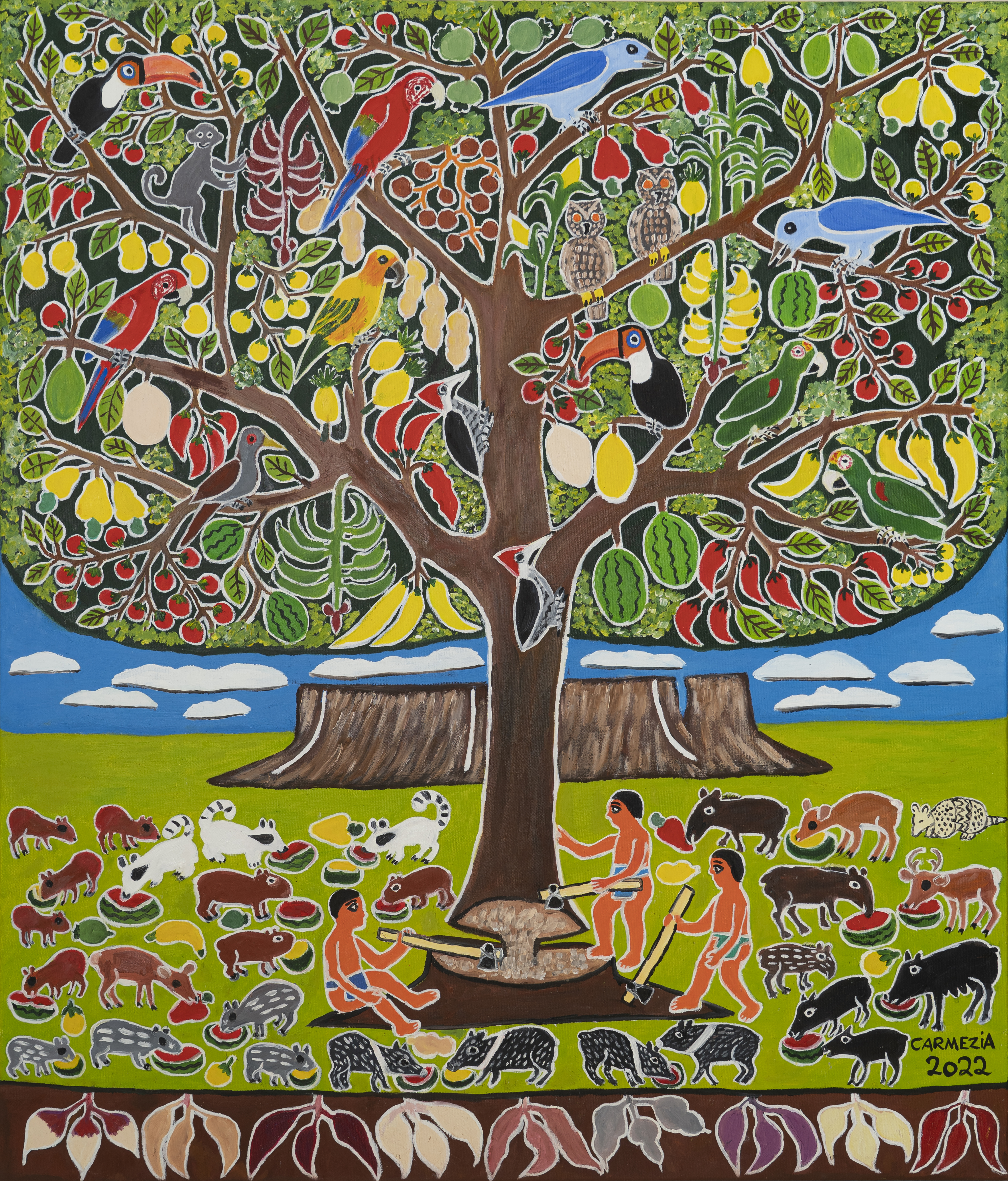Carmézia Emiliano
Parixara, 2020
Author:
Carmézia EmilianoBio:
Maloca do Japó, Terra Indígena Raposa Serra do Sol, Normandia, Roraima, Brasil, 1960Title:
ParixaraDate:
2020Medium:
Óleo sobre telaDimensions:
63 x 63 cmCredit line:
Doação anônima, no contexto da exposição Histórias da dança, 2020Object type:
PinturaInventory number:
MASP.11049Photography credits:
Eduardo Ortega
Carmézia Emiliano is an Indigenous artist of Macuxi origin, born in the community of
Maloca do Japó, in the state of Roraima. In the 1990s, she moved to Boa Vista, the state
capital, where she began to paint. Her works feature landscapes, objects of material
cultural, and the daily life of her community “My art is a service I provide to the culture
of my people, this is my greatest form of happiness,” she explains. Parixara is the term
used to designate a ritual of commemoration and appreciation of nature, of homage to
hunting and crop. A cassava fermented beverage—pajuaru—is served during the event,
while the participants play the kewei, a rattle in the shape of an adorned stick with small
sculptures representing animals such as fishes, birds, bees and armadillo. In the
painting, the composition is organized into different registers, almost symmetrically,
while also expressing movement. Two huts, each one with a hammock, and three trees
are positioned on the central axis of the upper part of the canvas. The figures occupy the
rest of the pictorial field, divided in three parallel rows, where the walking-dance
follows alternated directions.. The repetition of modules of individuals, with the same
straw costumes and their instruments-sticks decorated with small animal sculptures in
similar positions, provides a visual rhythm to the painting, evoking the marked cadence
of the songs and the musical accompaniment of this practice.
— Amanda Carneiro, assistent curator, MASP, 2021






